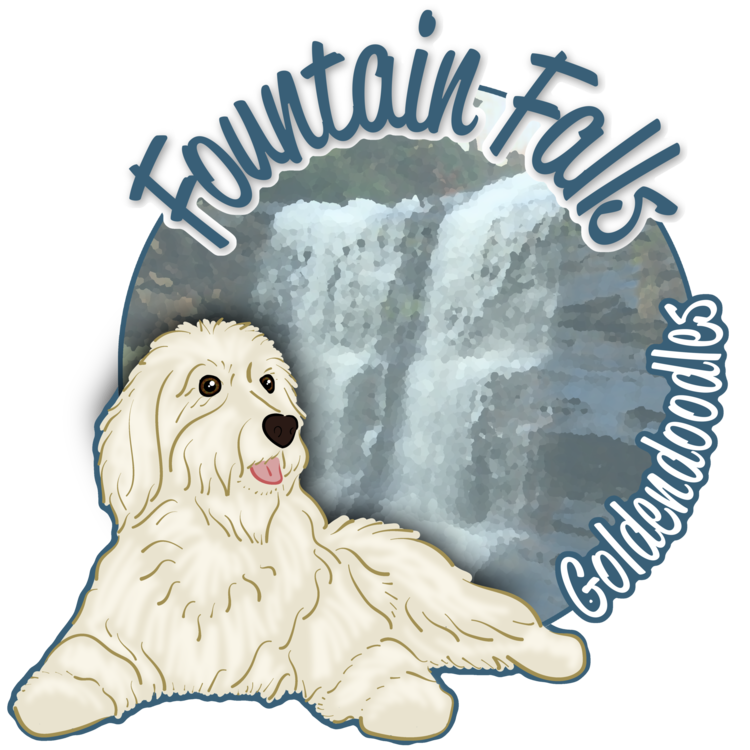Why do they fight about food??
Hey, my amazing breeders!! (warning this is long but oh so good)
I wanted to reach out to you and go over a famous conversation that will come up with your buyers and how I personally handle it and maybe shed some light on how you can too!
When your puppy parents go to the vets, whether right away or for checkups and vaccines they see the tech first and then the vet. What do they always ask? Food.
Let me break things down for you a bit: Vets are taught about food by the reps that service the office. Meaning all they know to talk about is what they carry, almost always 1 of 2 brans, Hills Science Diet or Royal Canin. If you look at the ingredient deck for almost any formula they carry there are so many unhealthy and unbeneficial ingredients I want to cry. So why do they do it?
When a dog is sick or exhibiting unusual symptoms the vet wants to make you happy and give you a solution to your problem. It is like human doctors who will give you an antibiotic for a cold just to shut us up even though all you need is time and rest to get better. Even stool samples do not detect, for example: Giardia is notoriously hard to diagnose with a single fecal examination. The parasites are shed intermittently, so pick the wrong pile of poop to sample and you may miss them. The diagnostic accuracy of fecal examinations can be improved by looking at multiple samples taken over the course of several days and by using zinc sulfate fecal flotation solution and a centrifuge, but even then the incidence of false negatives can be quite high.
So how can they be sure it is the food that is affecting the pups....they can't. Here is where you need to feel comfy educating them on how to read a dog food label and what to look for:
How to Read an Ingredient Label
The first ingredients, just like on an ingredient label for human food, are most important. Ingredients are measured by weight. The first ingredients on a Puppy Food label have the highest inclusion rate.
A dog’s ancestry dates back to that of a wolf - which needs meat to survive. Real meat ingredients at the top of the list are a good start to ensure the proper amino acids are going to be delivered through nutrition. Another ingredient that signals a high-quality food are multiple whole grains that are rich in complex carbohydrates. These will provide both your new puppy or full grown dog with the energy they require. Fruits and vegetables are another essential input into a quality pet food. Immune system benefits, cardiovascular health, and anti-oxidizing properties are all delivered through the vitamins that Fruits and Vegetables provide. Having chelated minerals in a pet food formula provides easily absorbable nutrients and vitamins that come from important metals such as zinc and iron. Probiotics and Prebiotics in a pet food also help maintain the health of your dog’s digestive tract.
The Guaranteed Analysis and Ingredient listing provide the ingredients in the food and a percentage breakdown of protein, fat, moisture etc. Make sure the food you are feeding your pet meets the nutritional levels established by the Association of American Feed Control Officials (AAFCO), by checking for the AAFCO statement on the packaging.
Learn more about the ingredients used in the TLC Whole Life Puppy Food
What to Watch For
By-products, artificial flavors and colors. By-products are not a complete source of protein. Artificial flavors or colors are unnatural ingredients and have no nutritional value. _ALMOST ALL VET FOODS CONTAIN BY PRODUCTS
Ingredient splitting is a way to move meat further up an ingredient list. For example, by splitting things like wheat, wheat shorts, whole wheat etc., meat ingredients are pushed further up the ingredient label, when actually there is more wheat in the formula.
Despite the fact that the ingredients at the top of the listing are the most important, you should still read the entire label. Look for ingredients that will help your dog stay healthy, like Sweet Potatoes and Green Lipped Mussels.
A food that names “Lamb” alone as the first ingredient actually has Lamb much further down the ingredient label by the time the food is fully produced. This is due to the water being evaporated from the food during the cooking process, decreasing the total weight of the ingredient drastically. Lamb Meal is dehydrated and concentrated prior to being added to the recipe.
Recalls - Although the ingredients in your Puppy Food are without a doubt of #1 importance, it is also important to be able to trust the manufacturer. TLC has never issued a recall on any product, so rest assured you are safe with us! All of TLC’s ingredients (except the Lamb and Green Lipped Mussels which are from New Zealand) are from North America.
Expiry date - Many pet foods that are bought in retail stores are often several months old. Pet food is required to have an expiry date on all packaging, so make sure you check for this before purchasing.
Foods that contain the word “with”- When a pet food label contains the word “with” (for example, “Puppy Food with chicken”), the “with” only legally has to mean 3% total weight or more of that ingredient is in the food. Be wary of the “with” rule when searching for a Puppy Food!
Thank You,
Jilleen Williams
TLC BREEDER SPECIALIST
